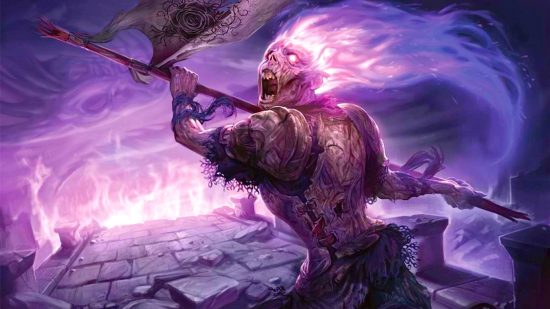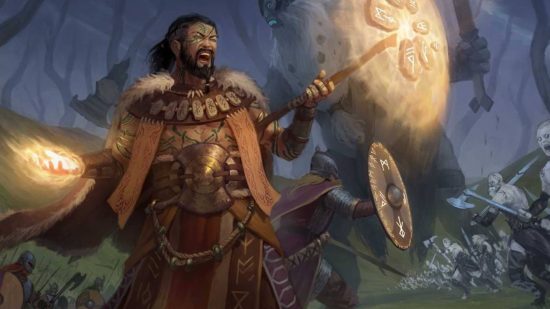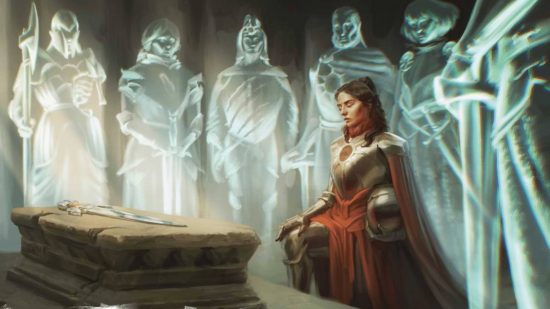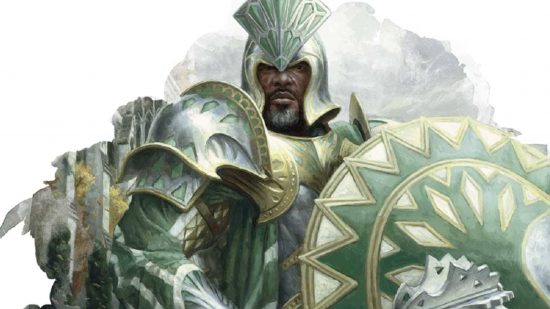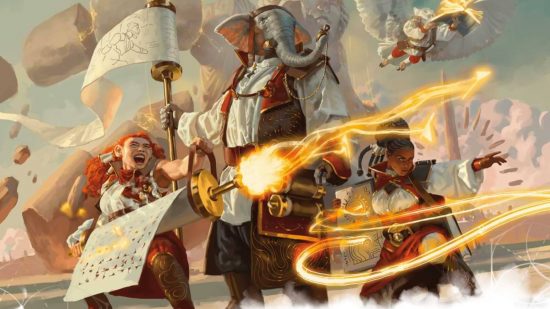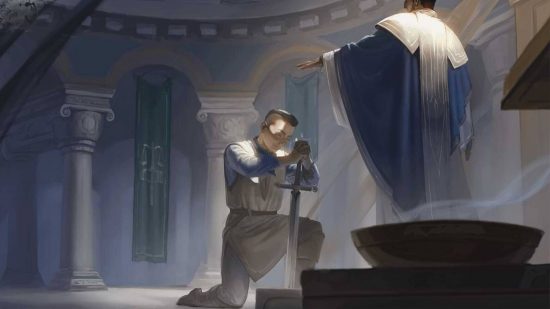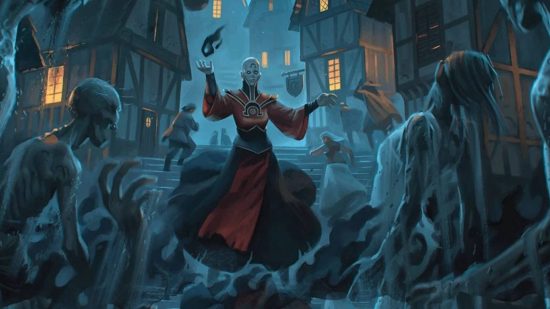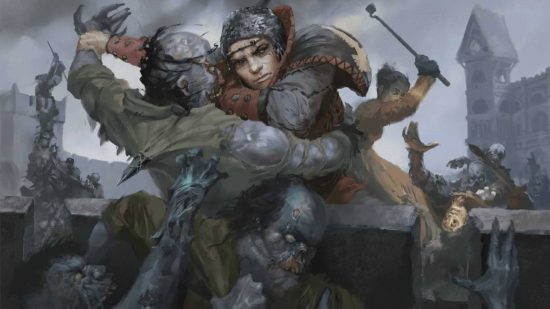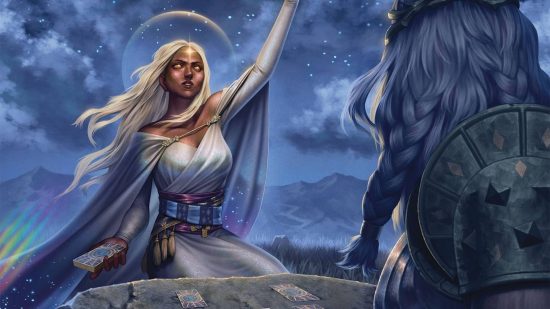For DnD’s holy clerics, the Turn Undead 5e ability is an essential tool – a godsend, you might say. With a short prayer to their gods and a holy symbol held aloft, clerics can literally turn the tide of battle, forcing undead hordes to flee. At higher levels, the more potent Destroy Undead version can destroy rotten abominations entirely. This guide explains how Turn Undead works, who can use it, and when it’s most effective.
Before we dig in, you should understand that, unlike some other features underpinning the DnD classes – like the Barbarian 5e‘s Rage, for example – Turn Undead isn’t a ‘one-size-fits-all’ ability.
Truthfully, it’s quite situational, and tricky to choose the best time or place to deploy its limited uses. Some players even avoid using it, in favor of other powerful Channel Divinity options from different Cleric subclasses. For a full handbook on playing DnD’s holiest warriors – and where Turn Undead fits in – read our complete Cleric 5e class guide.
For now, here’s everything you need to know about Turn Undead in 5e:
Turn Undead 5e features
| Level unlocked | 2nd |
| Casting Time | One Action |
| Duration | Instantaneous |
| Area of Effect | 30 feet |
| Attack / Save | Wisdom save |
How does Turn Undead 5e work?
As an action, Clerics can present their holy symbol and speak a prayer against the undead. Each undead within 30 feet of the cleric must make a Wisdom saving throw.
Those who fail are ‘turned’ for one minute or, until they take any damage. For context, one minute is ten rounds of combat in a typical skirmish.
Turned undead will spend their turns moving as far away from the cleric as possible. Turned undead cannot willingly stay within 30 feet of the cleric that cast Turn Undead. Turned creatures have no reactions and can only Dash or Dodge.
Who can use Turn Undead?
All clerics, regardless of subclass, have access to Turn Undead. Turn Undead also uses up a Channel Divinity slot. These slots increase once you reach certain levels, and a DnD short rest restores all uses. Here’s a handy table:
| Cleric Level | Number of Channel Divinity uses |
| 1st to 5th | 1 |
| 6th to 17th | 2 |
| 18th onwards | 3 |
Other classes, like the DnD Paladin, may have similar abilities granted by their chosen Paladin subclass – like Turn the Unholy from Oath of Devotion, or Turn the Faithless from Oath of the Ancients. However, Turn Undead is typically more potent due to its upgraded form, Destroy Undead. Speaking of which…
How does Destroy Undead 5e work?
Destroy Undead automatically modifies the Turn Undead feature starting at the 5th level. If a creature’s challenge rating falls below a certain threshold and fails its save against Turn Undead, the feature instantly destroys them.
In situations where you’re about to be overwhelmed by zombies, Destroy Undead is a hell of a Hail Mary. Refer to the table for the challenge ratings:
| Cleric Level | Enemy Challenge Rating |
| 5th | 1/2 or lower |
| 8th | 1 or lower |
| 11th | 2 or lower |
| 14th | 3 or lower |
| 17th | 4 or lower |
Pros and cons of Turn Undead 5e
In the early stages of a campaign, Turn Undead can quickly turn a bad situation around. Imagine you’ve been separated from your party by a horde of skeletons. You’re at dangerously low health, with no DnD spell slots remaining. Using Turn Undead can make all those skeletons run straight in the opposite direction – all without any danger to your party.
Plus, it’s available to all Clerics automatically at 2nd level, so you don’t have to waste any progression to obtain it – something you come to value highly once you’ve spent time experimenting with different DnD character builds.
At higher levels, Destroy Undead can become an early-game nuke against low-level undead hordes that hamper turns. It ensures you and your party won’t get zerg rushed by DnD zombies and skeletons.
However, Turn Undead’s greatest strength is also kind of its greatest ‘weakness’, As the name clearly states, it’s Turn Undead. In DnD campaigns with little to no undead presence, it becomes an essentially useless feature.
Not only that, but Turn Undead’s effectiveness doesn’t scale up against more powerful undead DnD monsters above Challenge Rating 4. It’s more of a crowd-control move, and only works on weaker enemies.
After a certain point, you gain access to spells with much more potent effects than Turn Undead, and you might want to save your Channel Divinity slot for your subclass feature.
Even so, you can’t deny the power of Turn Undead in the right situations. It might be useless outside graveyards and crypts, but in the right circumstances it can devastate an enemy necromancer’s day.
For more Dungeons and Dragons guidance, check out our full guides to all the DnD races, the best DnD character sheets to use, and the most useful DnD character creator tools to save time on your builds.
